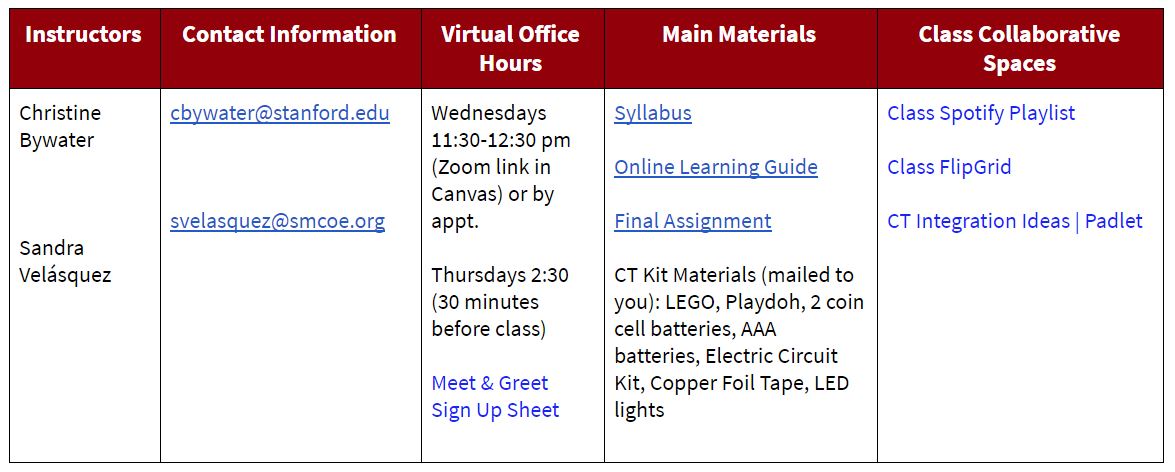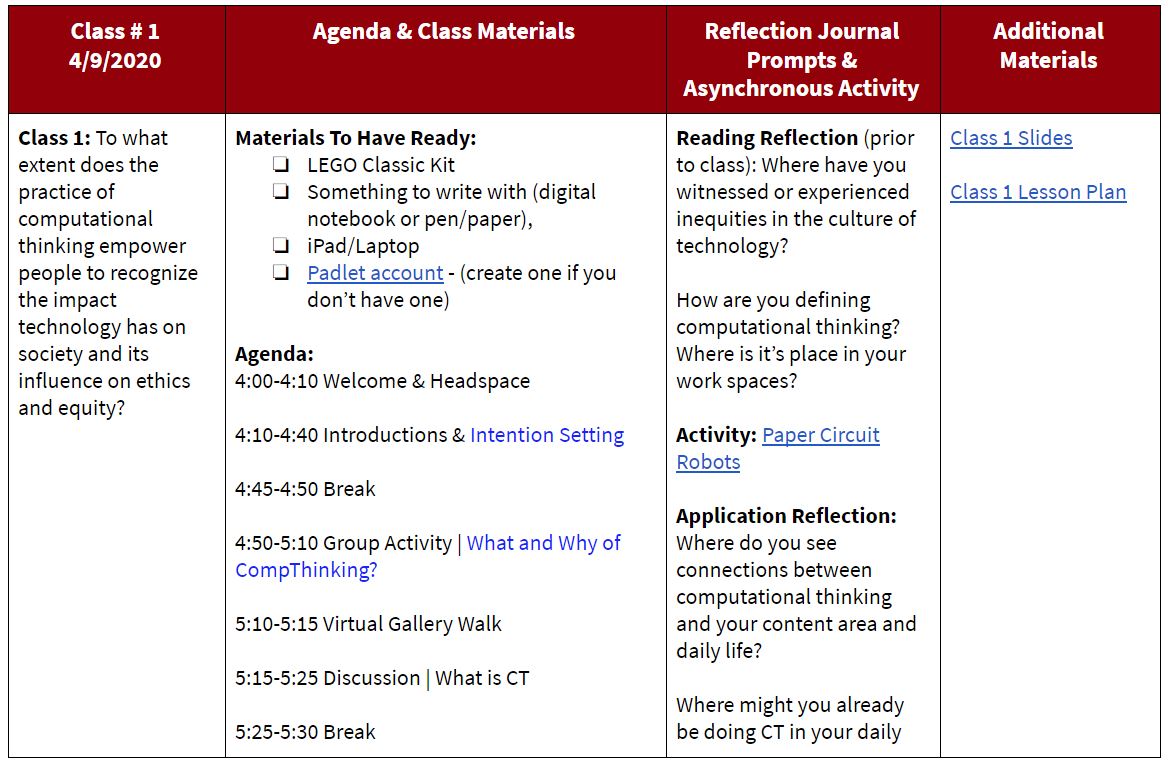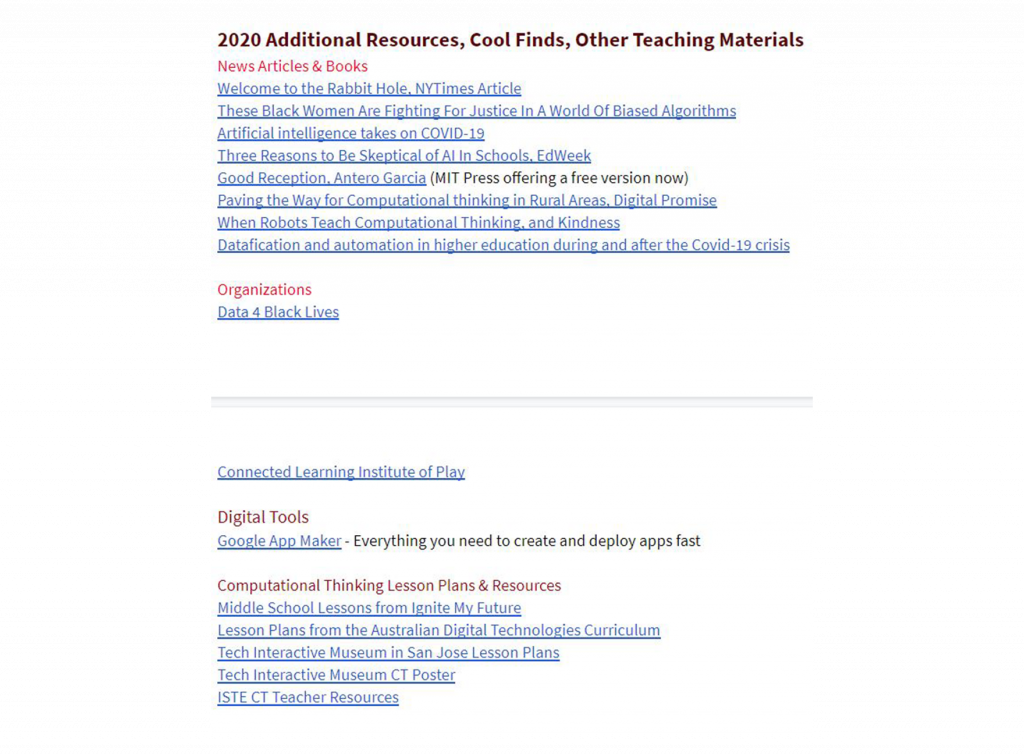A launchpad is a centralized, shared document (like a Google Doc) that is available to all learners and serves as a central hub for course content, agendas, assignments, and other essential resources or links for a class. This article explains how launchpads can help organize courses.
In Christine Bywater’s computational thinking class, she used a launchpad as a tool to manage teaching work and support student experience in the digital environment. On the launchpad that she created, there are three main sections: 1) a centralized space for course information (e.g., instructor information, syllabus, links to virtual office hours & collaborative class spaces), 2) weekly class agendas with class materials and action items, and 3) a list of additional materials that students can access.
Section 1: Create a centralized space for course information with hyperlinks

Section 2: Arrange agendas, class materials, assignments, activities, and other additional materials by week or class
If the class meets more than once a week, materials can be arranged by order of “week” followed by “class”, for example, Week 1 Class 1, Week 1 Class 2.

Section 3: Consolidate a list of learning resources for students

Pros:
- Google Docs allows more advanced and compatible formatting options (e.g., tables, hyperlinks) than Canvas Modules
- Instead of organizing information in lists or bullet points, information can be arranged in a multidimensional tabular format
- External technologies can be easily hyperlinked on Launchpad (e.g., digital whiteboards, virtual collaboration spaces, Canvas discussion board)
Cons:
- Google Docs does not interface with Canvas Calendar and, therefore, does not send out reminders and notifications to students
- Multi-week launchpads can become burdensome to students if they require a lot of scrolling; it is recommended to scope launchpads to single weeks
- Centralizing information in both Canvas and Google Docs can be confusing to students; it is important to use Canvas as a central hub, with launchpads as an informational item inside that hub
Examples of use in a digital classroom:
In an introduction email or Canvas announcement at the beginning of the quarter, instructional teams might share the launchpad document along with a quick introduction. The introduction would serve to set norms, introduce different components in the launchpad, and explain how students should use the launchpad in conjunction with other course materials (e.g., Canvas). During the quarter, instructional teams can remind students to refer to the launchpad for relevant information and action items.
Christine Bywater has generously shared a public version of the launchpad she created for EDUC 261: Curriculum & Instructional in Computational Thinking. You may copy this document and modify it for personal use:
Syllabus & Readings List | Computational Thinking 2020
For a Canvas syllabus template compatible with the Winter 2021 quarter, please view the Center for Teaching and Learning (CTL)’s Syllabus Template. The CTL has intentionally designed this template to help improve student learning in remote settings.
External resources:
How to use Google Docs (A guide to on how to use Google Docs directly from Google Support)